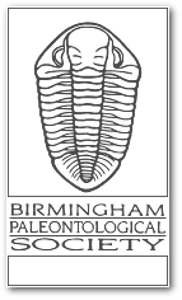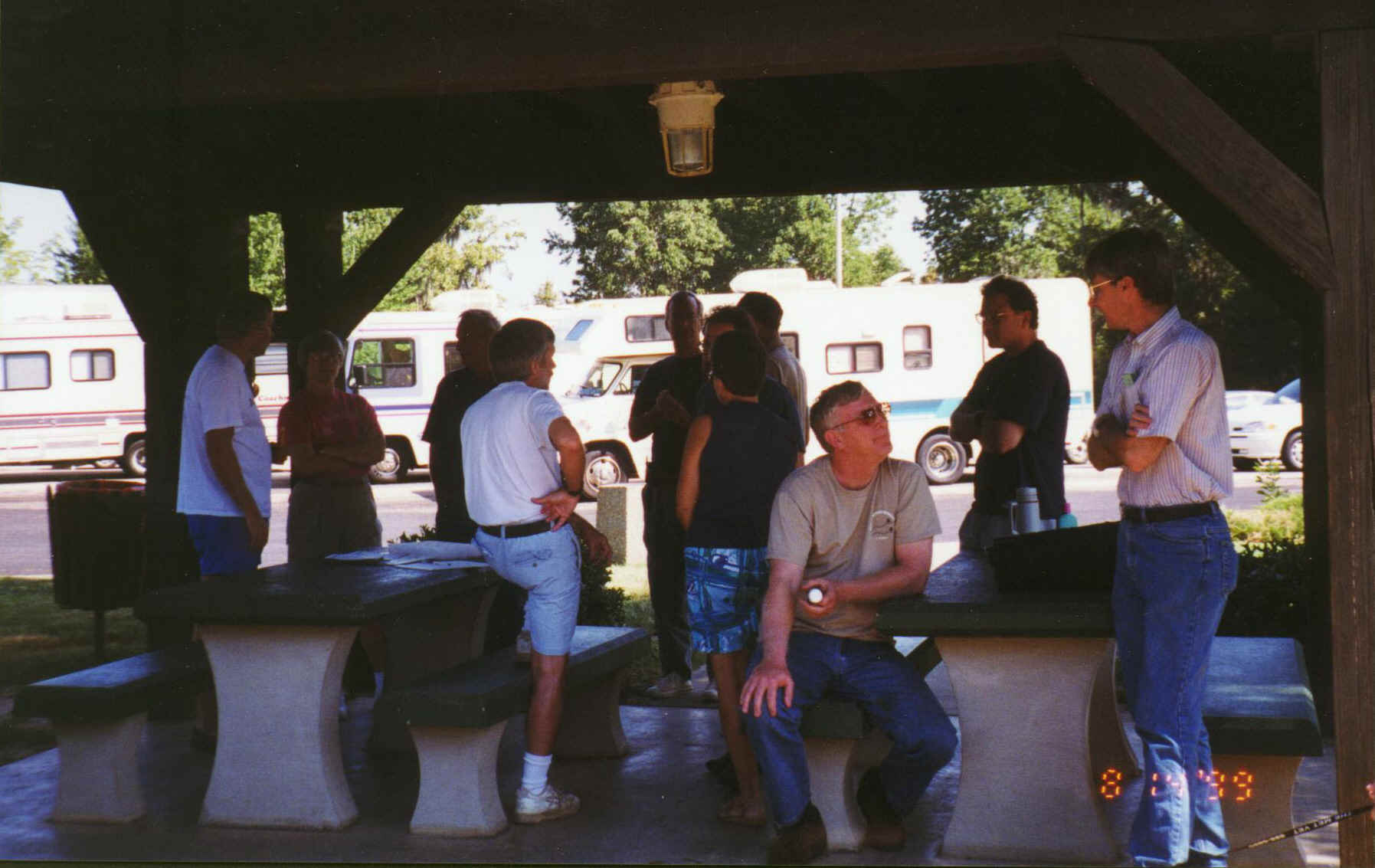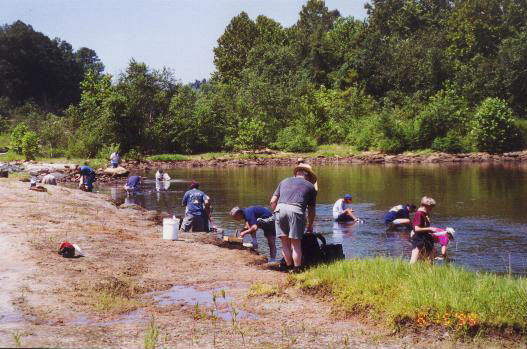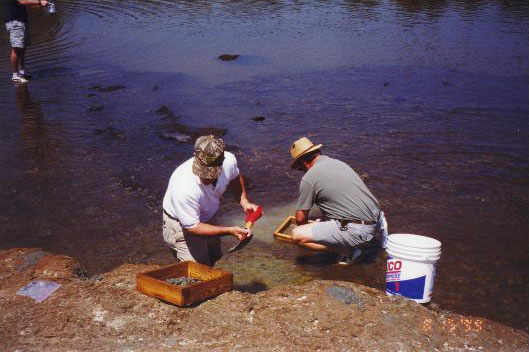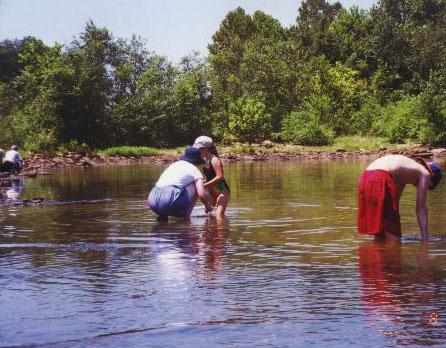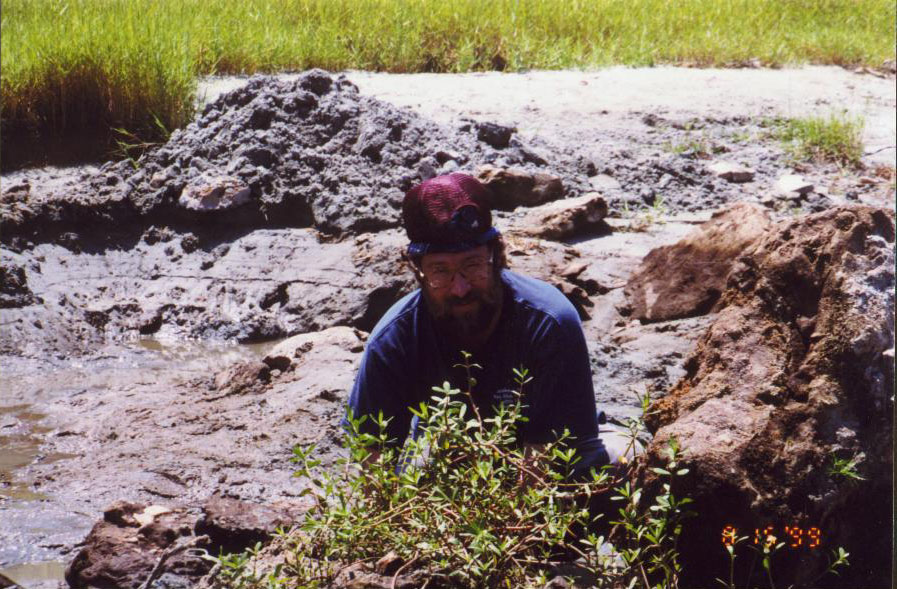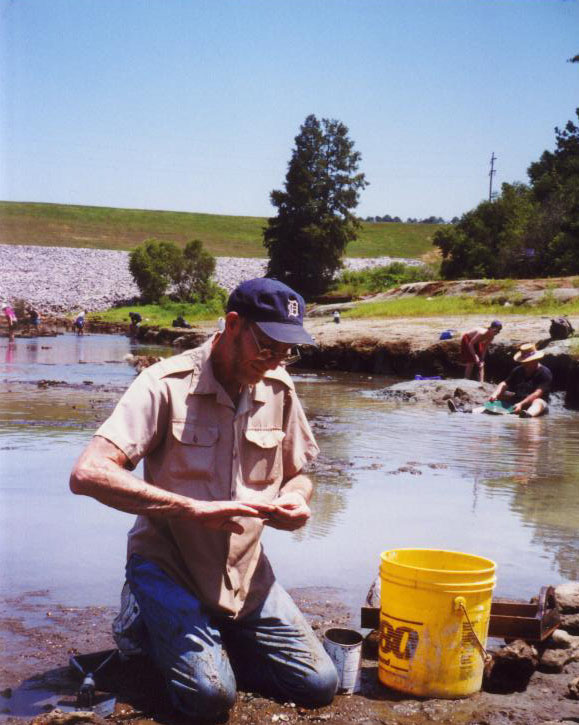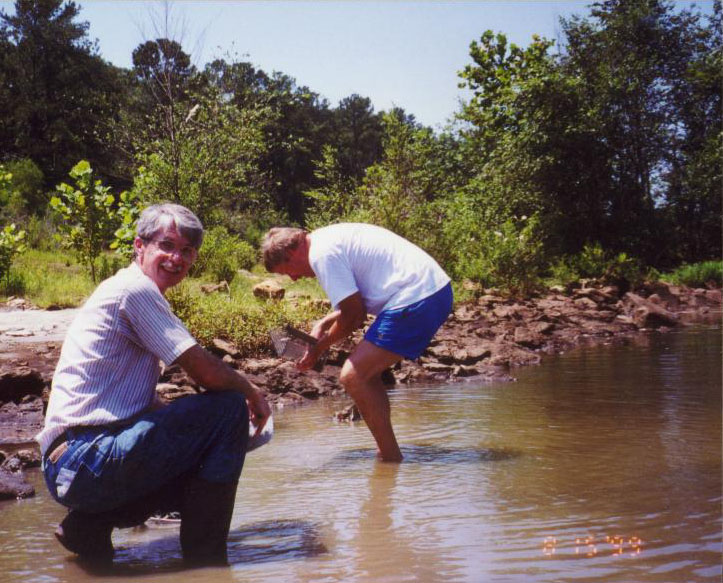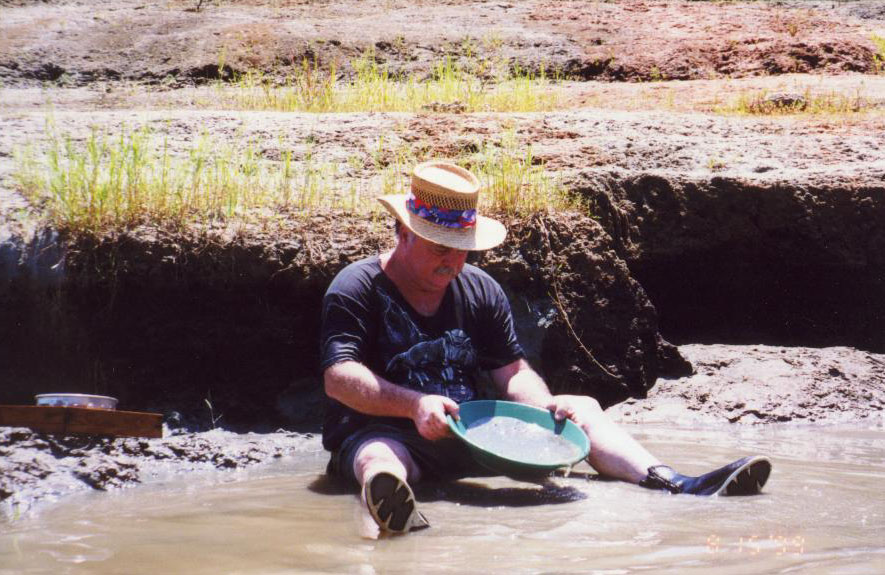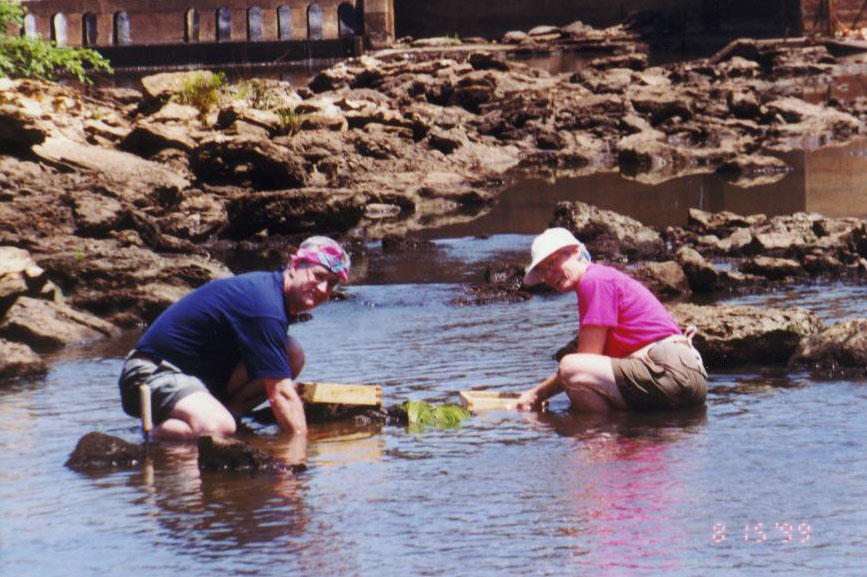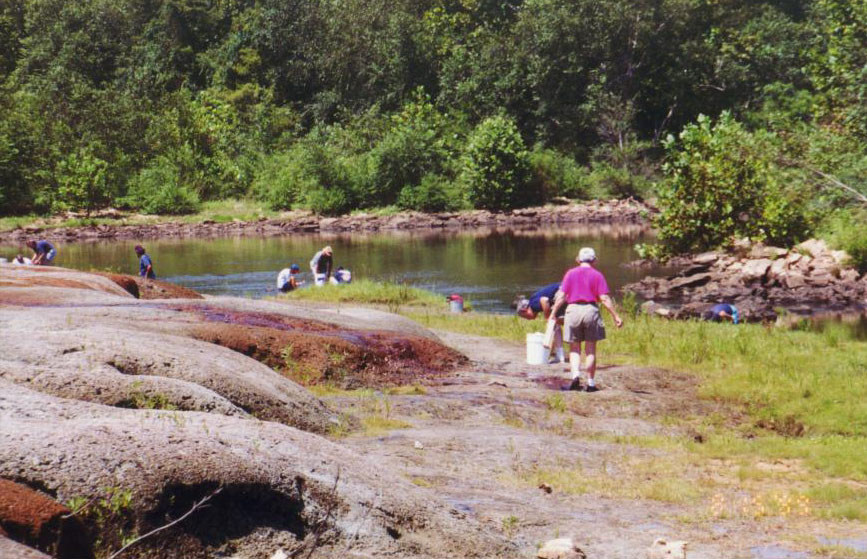Department of Physics and Astronomy
University of Alabama
Tuscaloosa, Alabama
Edited by Vicki Lais
The field trip had two parts. First, we visited a well-known river site in Covington County where shark and ray teeth are present in great abundance, in the lower Tallahatta Formation. Then, we visited a small museum owned by a private collector near Andalusia, in Escambia County. The trip was attended by 20 BPS members and guests on a hot, but not so humid, mostly clear day.
 According to Dr. David C. Kopaska-Merkel of the Geological Survey of Alabama, the lower Tallahatta Formation is early Eocene, or about 50 million years old. He says that the formation is slightly younger than the famous Bashi Marl shell bed, and older than the even more famous Gosport Sand shell bed.
According to Dr. David C. Kopaska-Merkel of the Geological Survey of Alabama, the lower Tallahatta Formation is early Eocene, or about 50 million years old. He says that the formation is slightly younger than the famous Bashi Marl shell bed, and older than the even more famous Gosport Sand shell bed.
The site is a well-known collectors area that was visited by the BPS previously in August 1998. The site has mostly shark and ray teeth preserved in a gray sand on the bank of the Conecuh river. The area has been visited so much that large holes pocked the bank where people had previously searched. Apparently, there is some commercial interest in the area, with people digging for large teeth for jewelry to sell, and leaving the smaller items in "spoil piles" of mud. Many of the attendees searched these piles with some success.
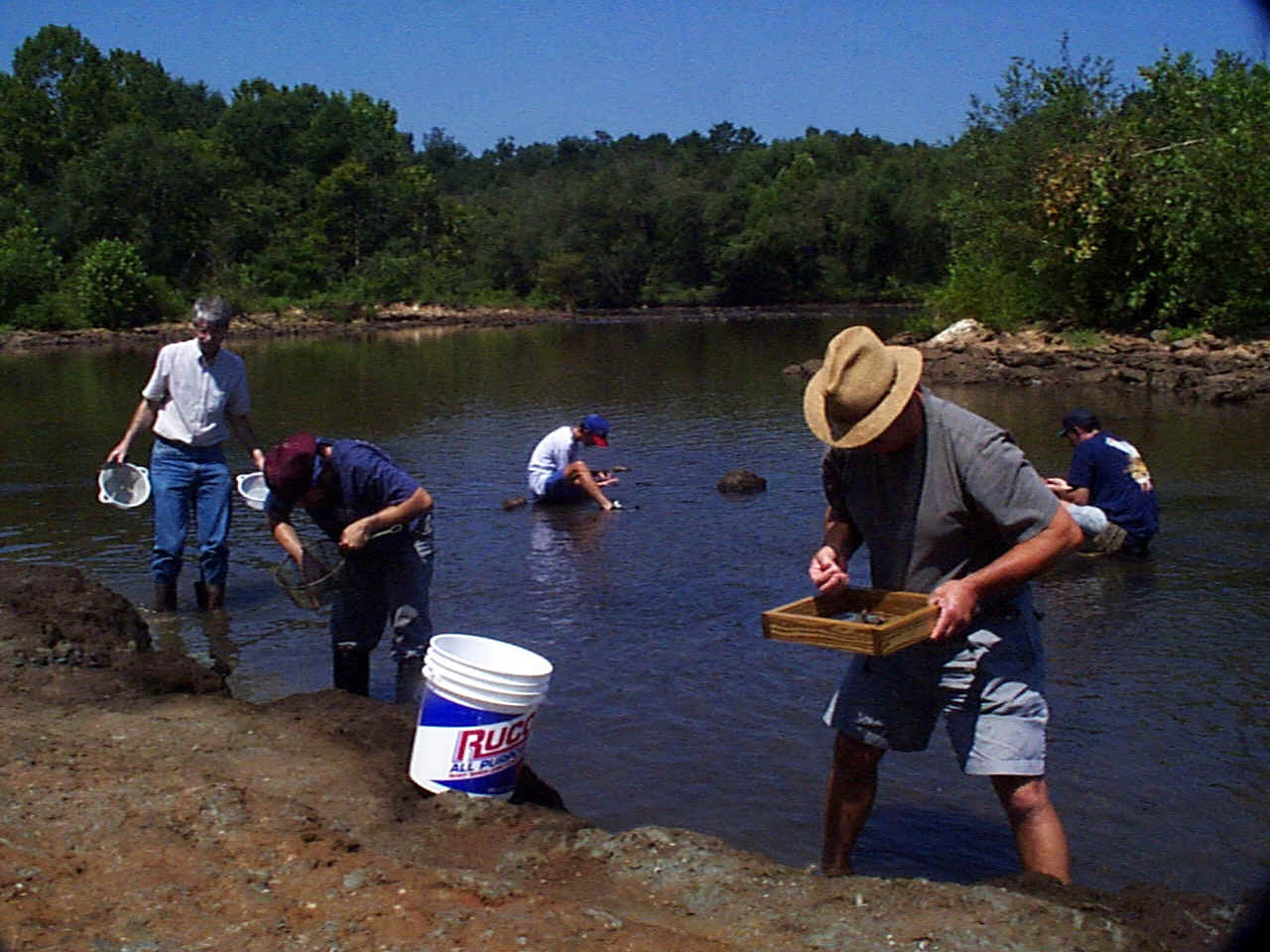 The most abundant fossils seemed to be teeth of sharks, with perhaps up to 11 species represented according to one collector, who told me that he visited the area about 3 times a month.
The most abundant fossils seemed to be teeth of sharks, with perhaps up to 11 species represented according to one collector, who told me that he visited the area about 3 times a month.
Dave Kopaska-Merkel told me that he found teeth of tiger sharks and at least 3 other kinds at this site, and saw a 5th kind. Most of the teeth I found seemed to be of the upper jaw variety, where there is a single broad cusp, at least two smaller accessory cusps, and a broad, symmetric root with a dip in the middle. These upper teeth are distinct from those of the lower jaw, which have a longer, narrower primary cusp, clear narrow ridges along this cusp, and a somewhat U-shaped root. No significant accessory cusps are usually seen on these teeth. I noticed that while most of these lower jaw teeth were black, some were actually light brown in color.
These are probably weathered examples, and often were missing part of the U-shaped root.
Next to the shark teeth, the most abundant teeth were those of rays. Unlike the shark teeth, which are also abundant at late Cretaceous sites in Greene County, the ray teeth seem to favor the Eocene site. On asking Dave Kopaska-Merkel about the difference, he offered the following speculation:
"I think most rays are bottom dwellers in shallow water, so if the Greene County site represents a relatively deep water deposit, then there might be relatively few ray teeth there. Also, I think ray teeth are slightly more fragile than shark teeth."
I am not sure what type of rays had the teeth we all found. Most of the ray teeth are elongated rectangles with narrow parallel ridges cut perpendicular to the long axis. At least one ray tooth that I found was notably curved.
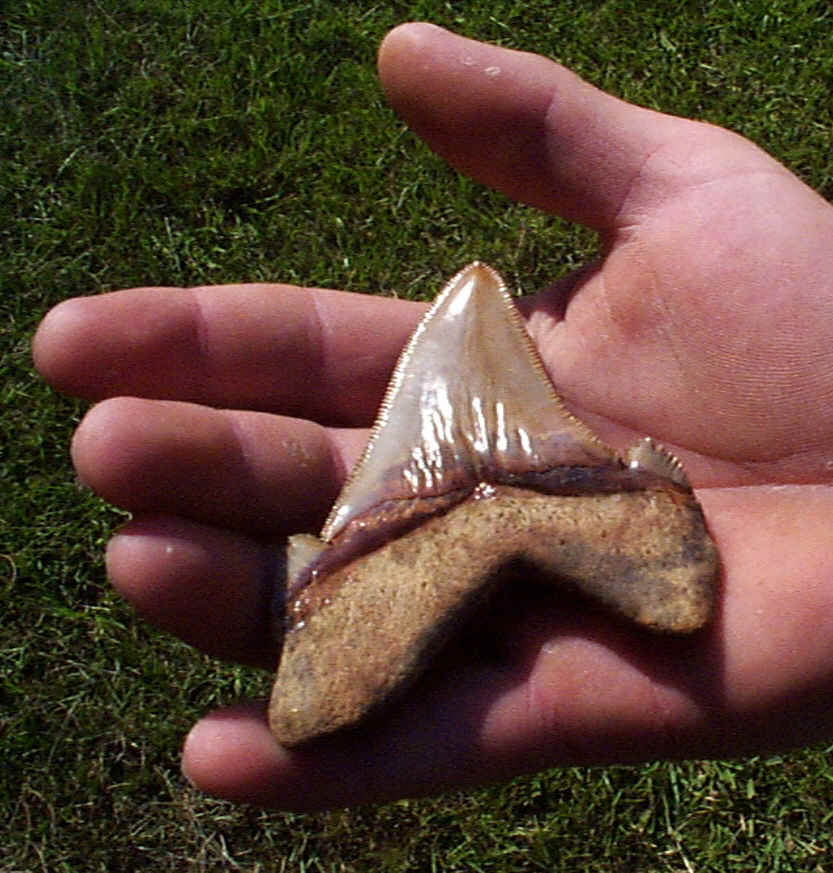
Certainly other types of fossils are represented among the hundreds of items people have been finding at this site. One attendee showed me what I think was a small part of a turtle shell, and several likely fish vertebrae were found, one with fragile stems still connected. Bone fragments, sawfish spines, and shark vertebrae were also found, the latter being distinctly circular and somewhat concave-shaped. Some fragile coral specimens were found that came from points higher up on the embankment, which exhibited abundant well-preserved burrows, according to Dave Kopaska-Merkel.
The high point of this field trip was without a doubt the BPS's visit to view the collection of shark teeth, marine organisms, marine mammal bones, and ice age fossils owned by Mr. Hoomes, a local contact.
Mr. Hoomes is an example of someone who developed a 21-year long interest in fossil collecting after a chance encounter with an unfriendly shark tooth in a creek near his parents home when he was 7 years old. While ambling around in the creek, he stepped on something sharp and thought he had cut himself on some glass. It turned out that he had stepped on an ancient shark's tooth, about one-half to one-inch long, that was standing roughly upright in the creek. (He now wears this tooth on a trademark hat.) He later did more exploring and discovered that shark teeth and other items had a habit of collecting into "potholes" around limestone embankments, and he became very good at recognizing the right places to look for such things. In two of his display cases, he had dozens of large shark teeth beyond anything which most of us had ever seen. To say it was merely an impressive collection of such teeth would be an understatement. Mr. Hoomes also had on display large whale vertebrae and jaw bones, probably from the same period as the sharks teeth.
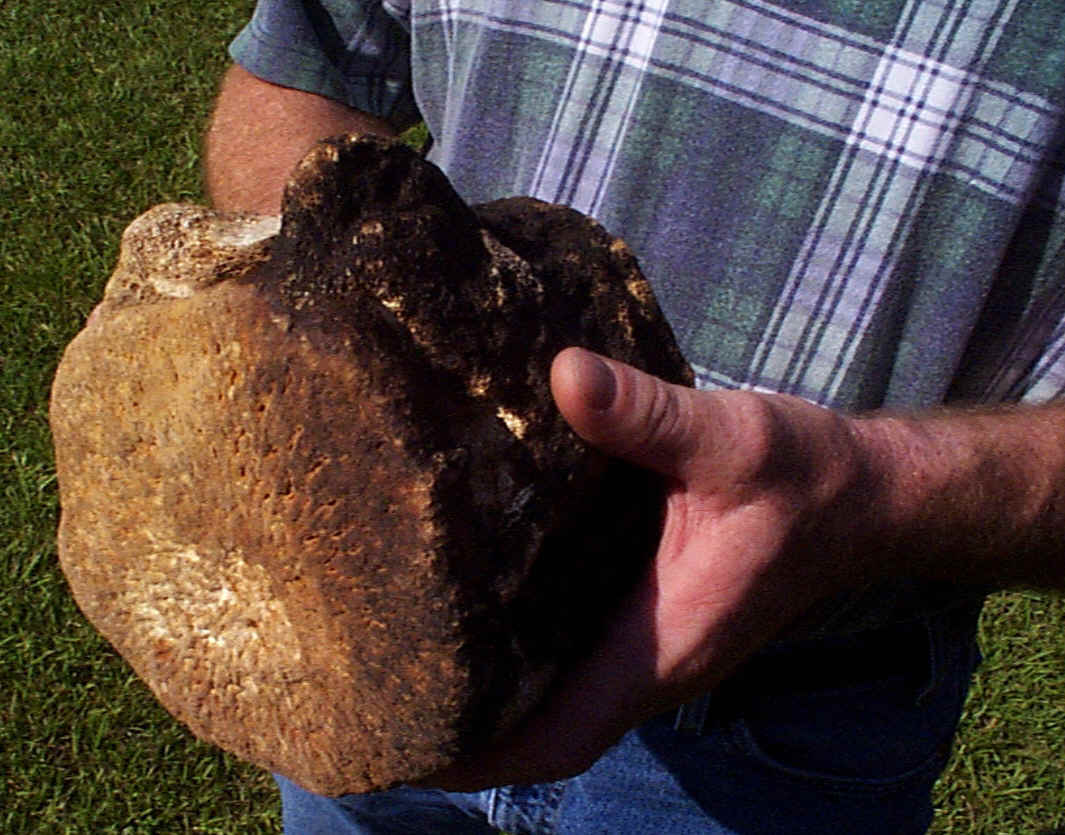
Especially interesting were Mr. Hoomes's ice age fossils. A humpless camel tooth, bison fossils, horse teeth, and many other items lined his many shelves. Mr. Hoomes also related to us his discovery of bones and stone implements at a likely "kill site" where early humans attacked and killed a mammoth. He showed us artifacts in the form of triangular bone fragments which had been made into likely primitive weapons by the ancient people of the area.
Mr Hoomes said he has explored many of the rivers within a five-county area around his home and his vast experience clearly showed in the things he told us.
His collecting has gone beyond what most of us do, and has included searches in remote creeks, not-easily-accessible embankments, and occasional encounters with alligators!
In summary, this was again an excellent field trip for the BPS. Thanks to James Lowery for arranging the trip, and thanks to Mr. Hoomes for taking us on a fascinating journey into Alabama's past! Thanks also to Dave Kopaska-Merkel of the GSA for his comments on this report, which improved its accuracy, and to Jim Lacefield for supplying all of the above images.
Following photos courtesy Larry Hensley.
|
The three people in the foreground are James Lowery with his back to the camera, Jim Lacefield, seated, and Ron Buta, arms folded and deep in a serious discussion of paleontology. |
|
|
|
The Hensley Family |
|
David Kopaska-Merkel |
|
Henry Edmonson |
|
Ron Buta (facing the camera) |
|
David Shepherd |
|
Bill and Kate Newman |
|
Fossils found included sharks teeth, ray teeth, petrified wood, and vertebrae of sea snakes. The time period represented in the site we worked was the Eocene, the early age of Mammals, approximately 40-50 million years ago. From this site we proceeded to a private museum. A fascinating exhibit!
